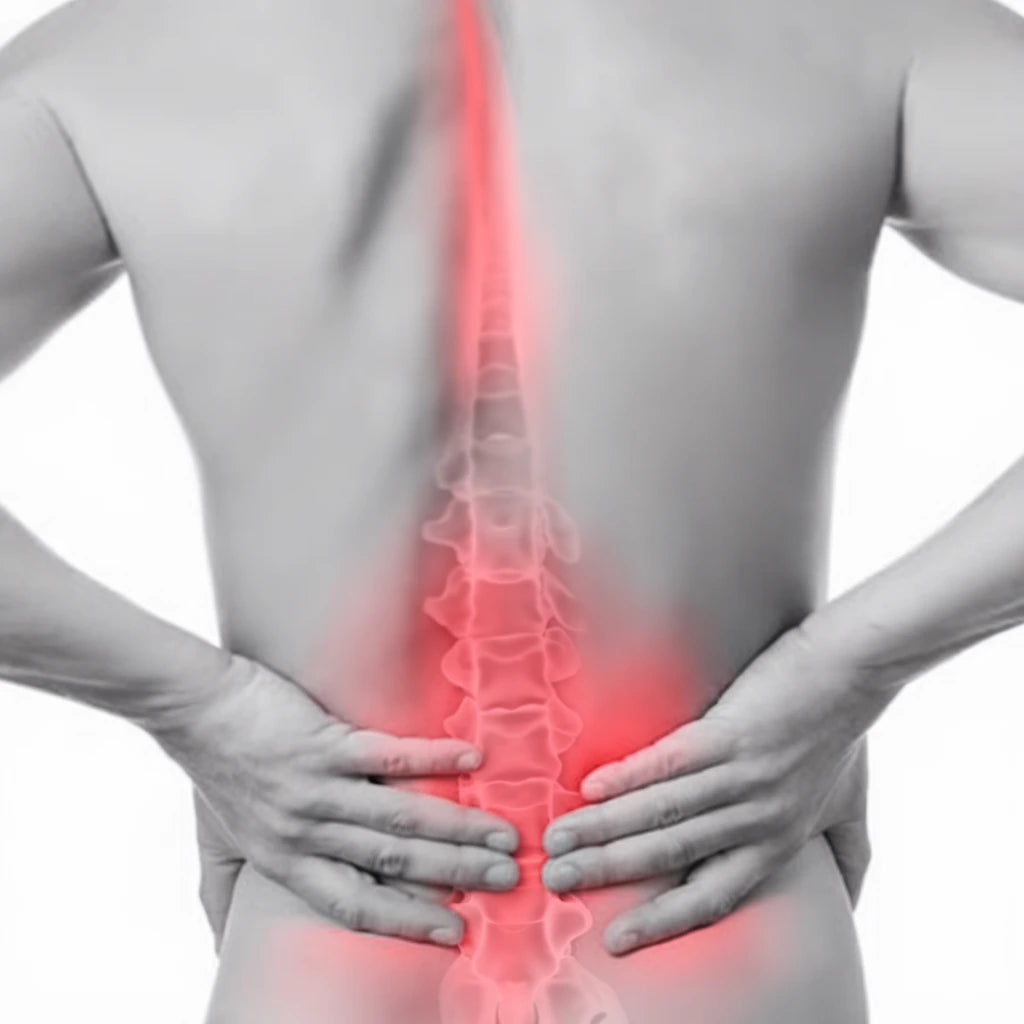Herniated Disc in the Back: Symptoms, Causes, and Treatment

Herniated discs in the back are a common cause of back pain that occurs when a disc between the vertebrae is damaged and bulges out. Here is an overview of the symptoms, causes, and treatment options for herniated discs in the back.
What is a Herniated Disc in the Back?
A herniated disc in the back occurs when a gel-like disc bulges out of its place and presses against nerves. This can cause back pain, sciatica, numbness, and sometimes weakness in the legs. The condition is often treated with rest, physical therapy, and exercises, while surgery may be considered in severe cases. A herniated disc in the back often feels like intense pain that can radiate from the affected area, and the discomfort can range from mild to severe depending on how much nerve root is pinched.
Symptoms and Signs of Herniated Disc in the Lower Back: Pain, Sciatica, and Lumbago
Common symptoms include:
- Pain in the lower back
- Pain radiating down one leg (sciatica)
- Numbness and tingling in the legs
- Weakness in the legs or feet
- Difficulties controlling leg movements
How does a herniated disc feel? Symptoms vary depending on the location of the herniated disc and which nerve is affected. Many experience intense pain that can radiate down the leg, especially when the herniated disc is located in the lower back. Some also feel muscle weakness or reduced mobility in the affected part of the body.
Causes of Herniated Disc in the Lower Back: Why Do You Get a Herniated Disc and What Hurts?
A herniated disc can be caused by:
- Gradual wear due to age
- Overloading or improper loading of the back
- Sudden movements or lifting
Pain from a herniated disc occurs when the disc bulges out and presses on a nerve root. This can happen suddenly during an episode of lumbago or develop gradually over time. Discs in the lower back are particularly vulnerable because this part of the back is subjected to significant strain in daily life. When a nerve gets pinched, it can cause pain both in the back and radiate down into one leg, sometimes all the way to the foot.
Diagnosis and Treatment of Herniated Discs in the Lower Back: Preventive Measures, Exercises for Herniated Discs, and Emergency Interventions
| Behandlingsmetod | Beskrivning | Fördelar med RyggKomforten™ |
|---|---|---|
| Vila och smärtlindring | Avlastning och antiinflammatoriska läkemedel | Ger stöd och stabilitet |
| Fysioterapi | Övningar för att stärka ryggmuskulaturen | Förbättrar hållningen |
| Kortisoninjektioner | Kan minska inflammation och smärta | Kan minska behovet av injektioner |
| Operation | I svåra fall där andra metoder inte hjälper | Kan potentiellt förebygga behov av kirurgi |

How RyggKomforten™ Can Help: Treat Herniated Discs and Relieve Lower Back Pain
RyggKomforten™ offers several benefits for individuals with herniated discs in the back:
- Provides support and stability to the spine
- Improves posture and reduces strain on the discs
- Can alleviate pain and discomfort during daily activities
- Helps prevent further injuries
For many with herniated discs in the back, RyggKomforten™ can also help reduce the need for surgery by relieving the load on the back and providing support when you need it most. The product is designed not to impair the muscles' own function but acts as a complement to exercises and other treatments recommended by your healthcare provider.
Buy nowConclusion: Healing and Prevention of Herniated Discs – Learn More About How You Can Manage Your Discomfort
Herniated discs in the back can be painful and limiting, but with the right treatment and support, most individuals can recover well. By combining conservative treatment methods with the use of supportive aids like RyggKomforten™, many can effectively manage their symptoms and improve their quality of life.
Surgery for herniated discs in the back is rarely necessary, as most herniated discs heal over time with appropriate treatment. It is important to be patient and understand that the healing process may take time. Maintaining good posture, using proper lifting techniques, and strengthening back muscles are essential to prevent further issues with herniated discs in the future.
Frequently Asked Questions (FAQ): Herniated Discs, Symptoms, and Treatment – When Should You Seek Care?
How long does a herniated disc in the back last?
Can I exercise with a herniated disc in my back?
Light exercise and specific workouts are often recommended as part of the treatment. Consult with a physiotherapist for a tailored exercise program.
How quickly can I expect results with RyggKomforten™?
Many experience immediate relief, but full effect may take a few weeks of regular use.
Is surgery always necessary for a herniated disc in the back?
No, most herniated discs can be treated without surgery. Surgery is only considered in severe cases where conservative treatment has not been effective.
Can RyggKomforten™ prevent herniated discs?
While RyggKomforten™ cannot guarantee that herniated discs are prevented, it can help improve posture and reduce strain on the back, which may decrease the risk of injury.
